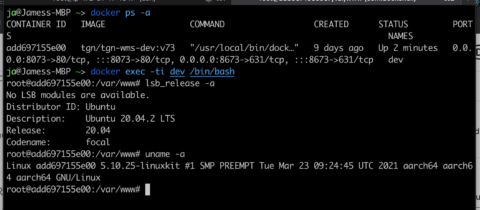

- #Macbook vmware fusion new york drivers#
- #Macbook vmware fusion new york full#
- #Macbook vmware fusion new york windows 10#
- #Macbook vmware fusion new york software#
I'll never say never, but there would have to be some kind of technological breakthrough because current emulation technologies just don't overcome the performance issue.Īnd before you say "well Rosetta does it", remember For those (my main reason for using VMware Fusion since version 1), I've kept an Intel Mac running VMware Fusion, but it is no longer my primary Mac. That won't help for use cases such as running older versions of macOS and Windows.

Microsoft already provides an implementation of this for ARM Windows 11. Running an ARM guest OS with x86-to-ARM code translation inside that seems a more viable solution for running arbitrary x86 applications, as this is a simpler problem to solve. There is at least one existing open source emulation product (UTM) but it appears to be missing functionality and is not stable enough for serious use. (Especially once you factor in the performance limitations.) Parallels and VirtualBox don't seem likely to do this either.
#Macbook vmware fusion new york full#
VMware have stated they are not intending to provide full x86 emulation for VMware Fusion on Apple Silicon Macs: it would require a lot of development effort and there is not likely to be a sufficient market of people willing to pay for such a feature. it may not cover some advanced features of the processor, or some other components in the computer, so applications which depend on those won't work. The emulation may also be incomplete, e.g.
#Macbook vmware fusion new york software#
Anything time critical will not work, and other software will be painfully slow. If you want to run a modern OS and applications in the guest (say anything from the last decade) then its performance will be a lot slower than a real PC.

An Apple Silicon Mac can probably emulate an x86 PC running an OS from the early 2000s at a speed resembling the performance of a real PC of that era. It boils down to a question of how fast the software in the VM is expected to run. This is a lot slower than virtualisation. If the guest and host have different architectures (as with x86 vs ARM), the closest you can get is if the host implements a software emulation of the full instruction set of the guest CPU, interpreting each instruction as it is executed. Virtualisation of x86 on ARM is not possible because by definition virtualisation requires the same processor architecture on the host and guest: most CPU instructions in the guest OS and applications are executed directly by the host processor. Is it something that could happen if software was developed to allow it to happen, or is it just something that can never physically happen because of the differences in hardware? It simply doesn't understand that right now it's not possible to run a usable Intel based VM on a Mac with a M1 cpu (much to my dismay) but I'd like to know if that is likely to change at some point in the future.
#Macbook vmware fusion new york windows 10#
My ancient 12-year old 2 core Dell Core i7 laptop running Windows 10 eats the emulated Windows 10 圆4 on the M1 for lunch.įile this whole experiment under "yes, you can do it, but really, should you if you're serious"? I think I can safely say that x86 emulation on ARM will leave you sorely disappointed.Īs a side note, this exercise highlights why nobody should expect x86 emulation to be built into virtualization products so that you can continue to run those x86_64 operating systems. That improved the speed, but not to where I consider it usable.
#Macbook vmware fusion new york drivers#
I've tried every suggested emulation tuning trick posted on the web, and yes I've installed all the QEMU drivers and SPICE tools. It's not disk bound either.Īnd it's indeed a science project. I did not starve UTM VMs or the Mac host for CPU or memory. It does not run anywhere close to native M1 chip performance. I can access a folder on my host Mac from Windows.īut wow, It's slow as molasses. Yes it installs (not as easily as I'd like, but it does install). If you need to get serious work done with an Intel operating system, use an Intel CPU.Īs a project, I'm in the middle of trying to get Windows 10 圆4 up and running on UTM on an M1 Mac.


 0 kommentar(er)
0 kommentar(er)
